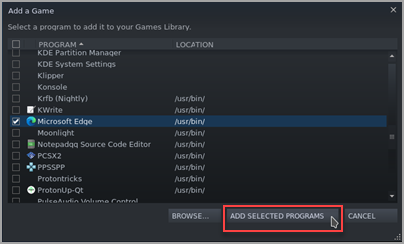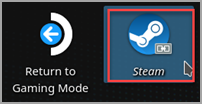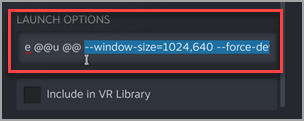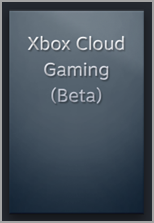Xbox Cloud Gaming in Microsoft Edge with Steam Deck – Microsoft Support
-
Press the Steam button to bring up the Steam Menu, then select Power > Switch to Desktop.
-
Select the Discover Software Center icon on the taskbar.

-
In Discover Software Center, select Applications > Internet > Web Browsers.
-
Find Microsoft Edge in the list of apps and select Install.
-
Once it’s installed, close Discover Software Center, return to the Desktop, and select Application Launcher.

-
Select Internet, then right-click on Microsoft Edge and select Add to Steam.
-
In the Add a Game window, scroll to find Microsoft Edge, check the box next to it, and select Add Selected Programs.

-
Back on the Desktop, select Application Launcher > System > Konsole (terminal window).
-
Edge will need to be able to access your Steam Deck controls with udev, so we need to give it override access. Set it by entering this command and pressing Enter:
flatpak –user override –filesystem=/run/udev:ro com.microsoft.Edge
Then enter exit and press Enter to close Konsole.
-
Open Steam by selecting the Steam icon on the desktop.

-
Select the Library tab, navigate to Microsoft Edge in the list, and then right-click it and select Properties.
-
Make the following changes to the Microsoft Edge shortcut:
-
Change the name (next to the icon) to Xbox Cloud Gaming (Beta)
-
Scroll down to LAUNCH OPTIONS and append the following (after @@u @@):
–window-size=1024,640 –force-device-scale-factor=1.25 –device-scale-factor=1.25 –kiosk “https://www.xbox.com/play”

Close this window when you are done.
-
-
Now, navigate to Xbox Cloud Gaming (Beta) in the Steam Library, right-click it, and select Manage > Controller layout.
-
In the Steam Controller Configurator, select BROWSE CONFIGS. Under Templates, select Gamepad with Mouse Trackpad. Select APPLY CONFIGURATION, then select DONE.
Adding custom artwork to your shortcut
At this point your shortcut will work; you can close the Steam window, select the Return to Gaming Mode icon on the desktop and find your shortcut in your game library in the NON-STEAM section. However, we’ve got some artwork for you that will make look it a little nicer. Here’s how to add that:
-
Download the supplied artwork from here. There is art here for Xbox Cloud Gaming and the Microsoft Edge browser. We are going to be using the Xbox Cloud Gaming files here:
-
Xbox_Cloud_Gaming_Banner.jpg
-
Xbox_Cloud_Gaming_Capsule.jpg
-
Xbox_Cloud_Gaming_Icon.jpg
Note: You can use a USB thumb drive to copy the files on to your Steam Deck, via Desktop mode. One place to store the files is in the “Documents” folder.
-
-
In Desktop Mode on your Steam Deck, launch Steam, navigate to Xbox Cloud Gaming (Beta) in your Library, right-click it, and select Properties.
-
Add the icon: Select the blank square to the left of the name of the shortcut, navigate to the location you saved the artwork, and select Xbox_Cloud_Gaming_Icon.jpg. Close this when you are done.
-
Add the banner: Select the game in the Library, right click the blank area behind the title above the PLAY button, and select Set Custom Background. Navigate to your artwork and select Xbox_Cloud_Gaming_Banner.jpg.
-
Apply the capsule: In several of the Steam Library views you will see a “blank” Xbox Cloud Gaming (Beta) rectangle like the following:

Right-click it, and select Manage > Set custom artwork. Navigate to your artwork and select Xbox_Cloud_Gaming_Capsule.jpg.
-
Update RECENT GAMES: Once you have used the shortcut and launched Xbox Cloud Gaming (Beta) at least once, it will appear in the RECENT GAMES section (again, within the desktop Steam client) with a blank background. Just as before, right-click, select Manage > Set custom artwork, navigate to your artwork and select Xbox_Cloud_Gaming_Capsule.jpg.
Tip: An easy way to make this happen is to launch it within the Steam desktop client, move your mouse cursor to the upper left corner to present your windows, and close the Xbox Cloud Gaming window from there. At that point it should be in RECENT GAMES.
At this point your Xbox Cloud Gaming (Beta) shortcut is ready to go! You can return to Gaming Mode via the icon on the desktop.











